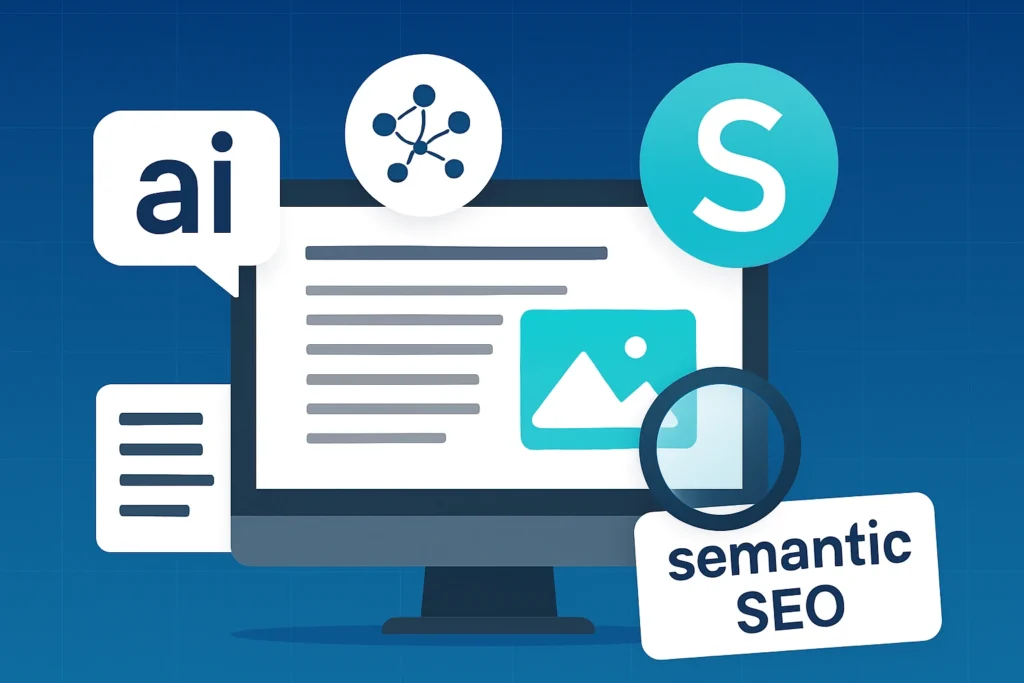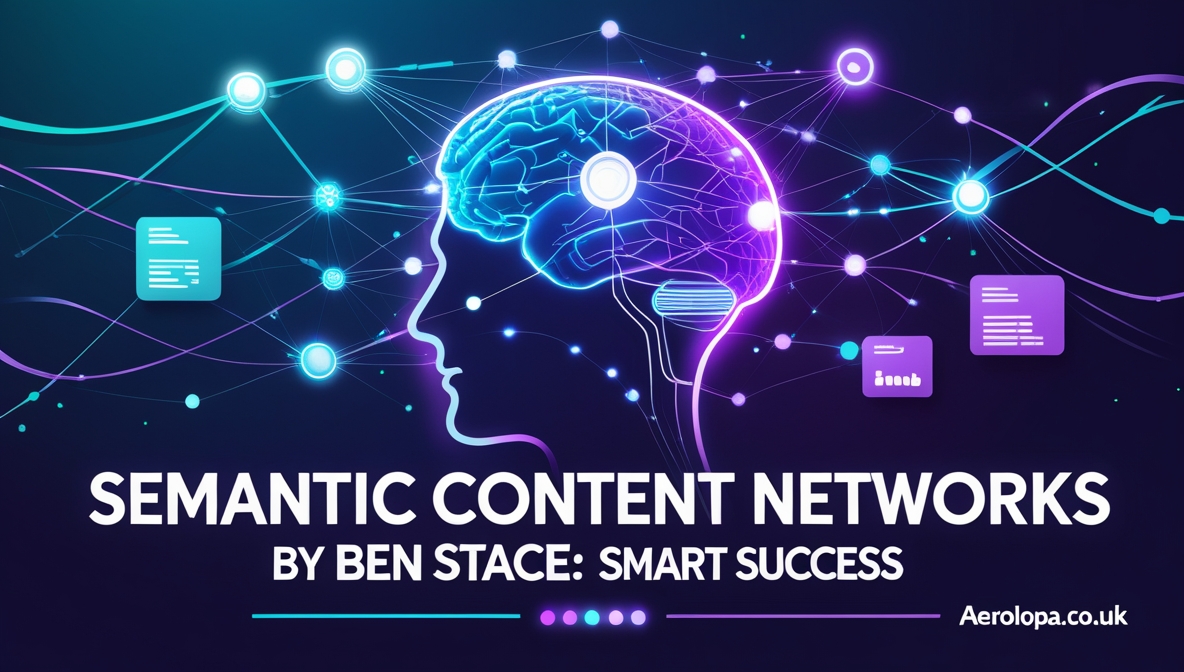Semantic Content Networks by Ben Stace: The Definitive Guide
Semantic Content Networks by Ben Stace represent an advanced framework for building digital ecosystems where content is connected by meaning, not only by keywords. This concept transforms isolated web pages into structured networks that reflect relationships between entities, queries, and user intent. The model strengthens topical authority, improves machine comprehension, and supports AI-driven search experiences.

What Are Semantic Content Networks?
Semantic Content Networks are interconnected groups of content structured around entities, attributes, and contextual relations. Unlike traditional silo models, they mirror semantic networks in artificial intelligence.
-
Entities: Core concepts such as “Semantic SEO,” “Knowledge Graph,” or “Schema Markup.”
-
Attributes: Qualifiers such as “definition,” “process,” or “tool.”
-
Relations: Connections like “is part of,” “supports,” or “explains.”
Ben Stace’s framework organizes web content like a knowledge graph, ensuring that every page is part of a network designed for clarity and discoverability.
Core Principles of Ben Stace’s Model
1. Topic Mapping
Ensure entity coverage across the domain. Build a map of all related concepts and organize them into primary and secondary categories.
2. Modular Nodes
Create atomic pages where each document covers one intent completely. A modular structure ensures scalability and reduces redundancy.
3. Semantic Linking
Connect pages through meaningful anchor texts based on relationships, not random phrases. Internal linking creates pathways for both users and search engines.
4. Structured Metadata
Apply schema.org markup, JSON-LD, and ontology tags. Metadata provides machine-readable signals to search engines and AI systems.
Step-by-Step Methodology
Step 1: Discovery and Entity Extraction
-
Identify key entities with tools like spaCy or Google NLP.
-
Group entities by shared attributes and user intents.
-
Prioritize high-value topics with low competition.
Step 2: Network Design
-
Assign nodes for each entity-intent combination.
-
Define relations between nodes: definition, process, comparison, or FAQ.
-
Map hierarchy with pillar pages, cluster pages, and bridges.
Step 3: Content Development
-
Write unique, fact-based content for each node.
-
Optimize metadata with schema.org.
-
Insert contextual links with semantic anchors.
Step 4: Expansion and Scaling
-
Add sub-networks for new queries.
-
Introduce contextual bridges across topics.
-
Monitor entity performance in search results.
Step 5: Governance and Updates
-
Audit network regularly for broken links and outdated data.
-
Refresh content every 12 months or after major industry updates.
-
Merge redundant pages to maintain authority flow.
Benefits of Semantic Content Networks
-
Improve Crawlability: Reduce orphan pages and create efficient internal pathways.
-
Strengthen Topical Authority: Demonstrate expertise by covering complete entity maps.
-
Support AI Search: Provide structured signals for AI-driven retrieval.
-
Increase Engagement: Enable deeper session journeys with semantic interlinking.
-
Boost Rankings: Improve visibility through context-rich, entity-first structures.
Comparative Table: Traditional Content vs Semantic Networks
| Feature | Traditional Content | Semantic Content Networks |
|---|---|---|
| Linking Style | Random or keyword-based | Entity-driven, contextual |
| Structure | Isolated pages | Interconnected nodes |
| Metadata | Minimal | Schema-rich |
| Authority | Spread thin | Concentrated on topical hubs |
| AI Compatibility | Low | High |
Best Practices for Implementation
-
Ensure comprehensive entity coverage before expansion.
-
Clear internal linking based on intent, not volume.
-
Apply schema markup consistently across nodes.
-
Track indexation and crawl depth with log analysis tools.
-
Spend resources on refreshing outdated content before creating new nodes.
Common Mistakes to Avoid
-
Over-linking without semantic justification.
-
Using keyword-only clusters instead of entity-first mapping.
-
Ignoring schema validation errors.
-
Allowing nodes to remain orphaned.
-
Publishing overlapping content without governance rules.
Advanced Applications Beyond SEO
Learning and Development
Semantic networks map skills and learning paths. Entities represent competencies, nodes represent resources, and relations define progression.
E-Commerce
Products, categories, and attributes can form networks that improve recommendation engines and faceted navigation.
Healthcare
Conditions, treatments, and symptoms form semantic pathways that enhance medical search engines.
FAQs About Semantic Content Networks by Ben Stace:
How to design a semantic content network for a new domain?
To design a semantic content network, map entities, create modular nodes, apply schema markup, and interlink based on meaning.
How to measure authority in a semantic content network?
To measure authority, track internal PageRank distribution, coverage metrics, and engagement depth across the network.
How to integrate semantic networks with AI systems?
To integrate networks with AI, apply structured data, ontology mapping, and maintain consistent entity naming across nodes.
How to update a semantic content network?
To update, audit all nodes, refresh outdated entities, validate schema, and retire duplicate pages.
How to prevent semantic drift in large networks?
To prevent drift, enforce governance rules, maintain strict ontology alignment, and apply contextual bridges strategically.
Tools for Building Semantic Content Networks:
-
Google NLP API
-
spaCy NLP Toolkit
-
Protégé Ontology Editor
-
Schema.org Validator
-
Screaming Frog SEO Spider
-
Oncrawl Semantic Analyzer
Metrics to Track for Success:
-
Percentage of entity coverage
-
Crawl depth per node
-
Internal PageRank flow
-
Indexed node count
-
CTR for query families
-
Engagement depth per session
Learn More: Webfreen.com Fashion: The Ultimate Guide to Style, Sustainability, and Smart Shopping
Best Guest Posting Sites 2025: Complete List for High-Authority Backlinks and Traffic
Conclusion:
Semantic Content Networks by Ben Stace transform SEO from keyword-first to entity-first. By mapping entities, creating modular nodes, interlinking semantically, and applying structured metadata, networks become aligned with both human users and AI systems. This model improves topical authority, enhances AI compatibility, and drives measurable ranking growth. Proper governance, measurement, and expansion ensure sustainability across industries.







